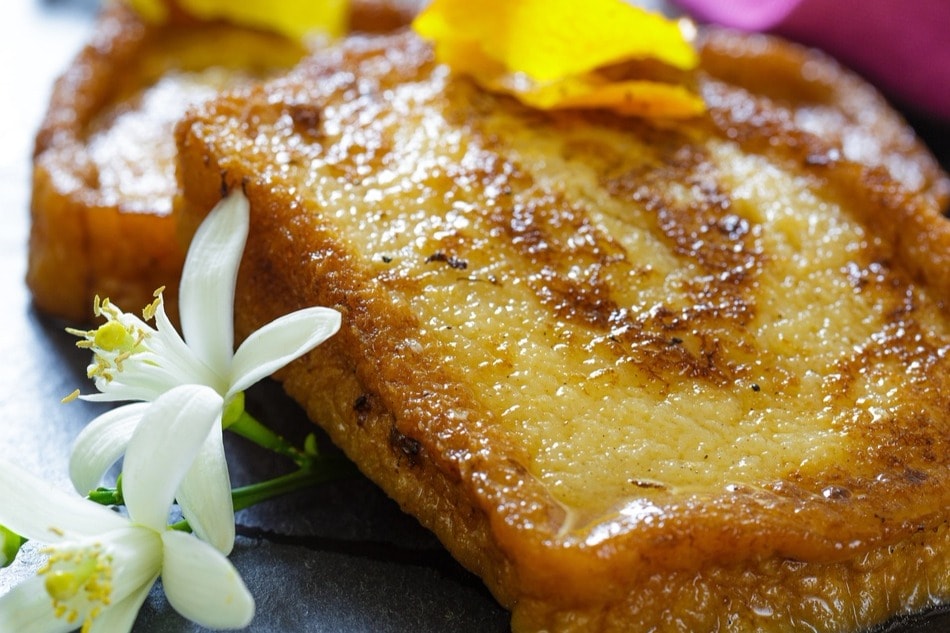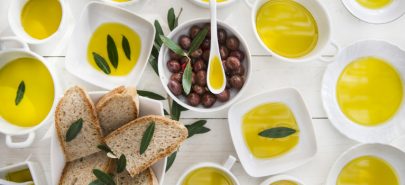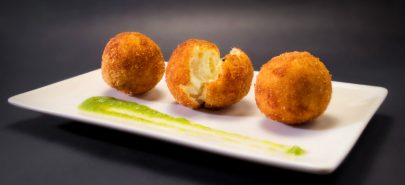Taste 7 of the most traditional Food Dishes of the Holy Week in Andalucia!
The gastronomy of the Holy Week in Andalucia stands out for its rich variety and recipes. Meat-less dishes fill the tables of Andalusian families from the first day of the Lent until Easter. The nutrients of the meat are supplied by those of fish, such as the cod, which converts into one of the main ingredients of the food of the Holy Week.
But mouth-watering sweets are also a tradition of this time of the year: while in Andalucia, make sure to follow the scent of cinnamon and honey, as they will lead you to the bakeries with shop windows filled with colourful and delicious sweets.
So, take a look at 7 traditional dishes you must try if you’re in southern Spain during the Holy Week.
1. Potaje de Vigilia

This vegetable soup (literally, “the eve’s soup”) is made of cod (which is used as protein content instead of meat), chickpeas, spinaches and hard-boiled eggs (the latter being common only in some areas of Andalucia). It’s usually the star of a 1-course meal, and it may be accompanied by a salad. It’s usually served in a tureen located in the centre of the table so that every dinner guest can help themselves as they please. This recipe is spread throughout Spain, and it appeared as a consequence of the Carlist Wars in the 19th century.
2. Buñuelos de Bacalao

Literally translated as “cod fritters”, the “buñuelos” are a relatively-easy and economic dish to prepare. They’re made of crumbled cod and parsley, which is later battered and fried in an olive-filled pan. Although this speciality is consumed especially during winter months, it’s highly spread during Lent and the Holy Week. Legend has it that this dish appeared in Seville in the 13th century, although it’s not until 1860-1870 that it became common to see it in the inns of the biggest Andalusian cities.
3. Torrijas

The Holy Week’s sweet par excellence, the torrijas are easily made. You’ll only need hard bread soaked in milk (or wine) with sugar, cinnamon, lemon rind and egg yolks, which will be fried later. The torrijas have been eaten by generations of Spaniards since the 15th century. Nowadays, you’ll find all kind of torrijas neatly displayed in the Andalusian bakeries.
4. Arroz con leche

This dish is made only with rice cooked in milk, cinnamon and sugar. The raw material of this dish is the rice that used to come from the marshlands of the Guadalquivir, and it’s a typical sweet dish of the Holy Week since the 20th century.
5. Pestiños

The pestiños are another typical sweet of the Andalusian Holy Week (and of Christmas, too) since the 16th century. It’s said to have a common andalusí forefather with the Islamic sweet shebbakiyya. The pestiño is made of flour, yeast, sesame, orange juice and powder cinnamon. The dough is then fried and covered in honey (or sugar, as an alternative).
6. Buñuelos de Viento

The elaboration of this sweet is similar to that of the buñuelos de bacalao, although they are made of a doughnut made of flour, yeast and sugar. You can also dust some cinnamon to add a more peculiar flavour. A more delicious version sees the buñuelos filled with cream, chocolate, or custard. It’s common to consume it during the winter months, from All Saints’ Day to the Holy Week.
Their name (literally, “wind fritters”) is due to the way the doughnut duplicates itself when they’re fried so that it seems they’re filled with air.
7. Limón cascarúo
Literally “the lemon rind”, this sweet variety of lemon is spread in the province of Malaga and mainly cultivated in the town of Pizarra. It’s sweeter and less astringent than other types of lemons. People eat it directly, or accompanied by a sugar cane, during the processions of the Holy Week in Malaga and, in particular, on Good Friday morning, when people reach the top of Mount Calvario.
Where to stay in Andalucia
If you want to taste the Food of the Holy Week in Andalucia while enjoying the processions, the best option is to find a holiday home where you can relax and recharge your batteries. Discover some of the best holiday villas in Andalucia by clicking on the button below.


Have you tried any other food that you think should be on this list? Tell us in the comments below and don’t forget to rate the post 🙂







